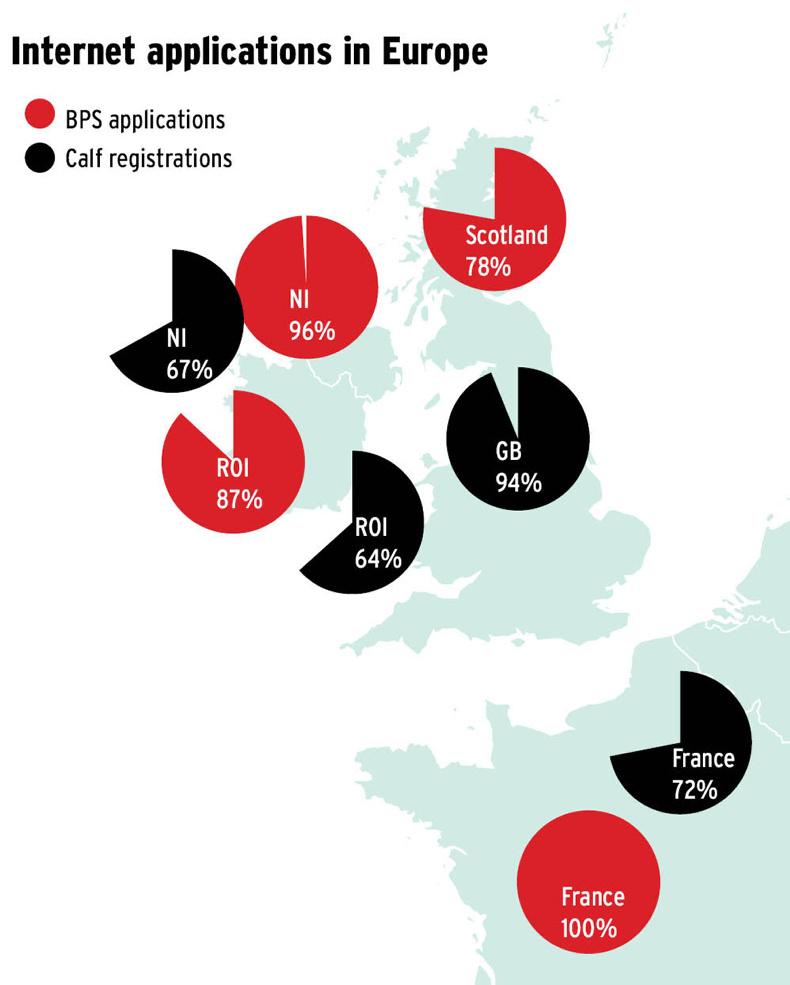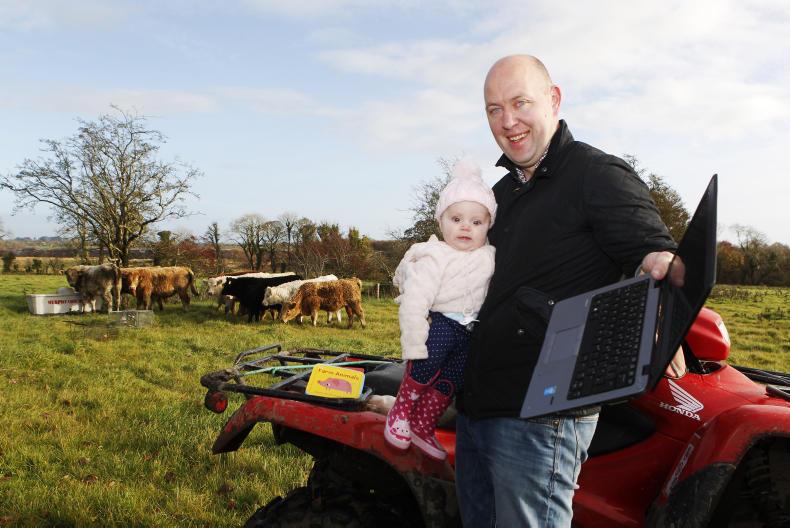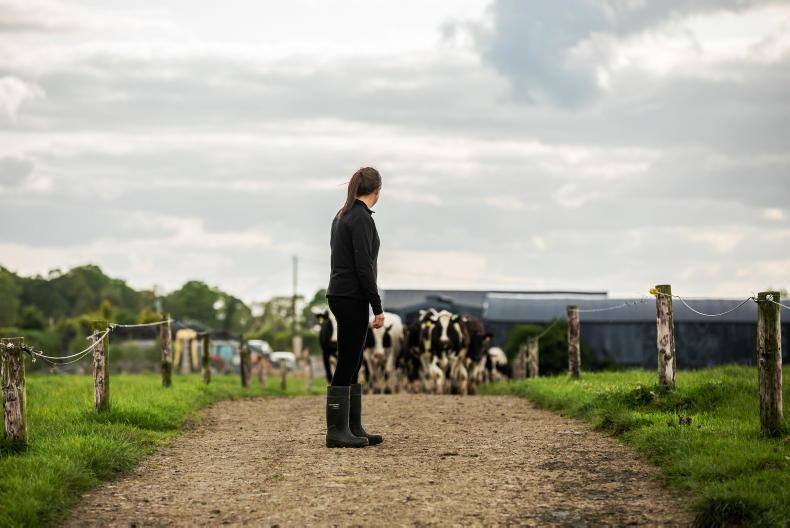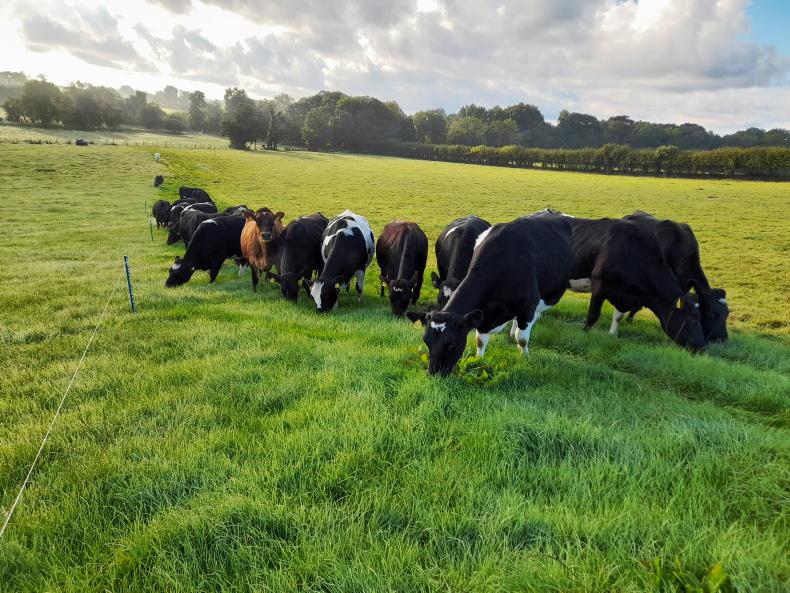The Department of Communications estimates 77% of all premises in Ireland will have access to high-speed broadband by the end of 2018, compared with 65% last September.
High-speed broadband was available to just over 50% of rural households in the Republic in the latest comparison conducted by the European Commission in June 2016 – so there has been progress. Ireland ranked 23rd out of 31 countries surveyed in that study for the availability of basic internet access.

The Republic was 21st for connections of 30 megabits per second (Mbps) and faster, which is the Irish Government’s definition of high-speed broadband. This is an issue across Europe, with ongoing coalition talks in Germany including a commitment to deliver high-speed broadband to rural areas by 2025.
A comparison of Ireland, France and several regions of the UK, all with relatively similar farming structures, shows that the Republic has the lowest share of online transactions for both BPS applications and calf registrations (see map).
Northern Ireland will begin to phase out paper calf registration this May. The 2016 EU survey found that “a state-funded infrastructure investment in Northern Ireland has resulted in near-complete coverage of the whole province [by high-speed broadband], despite its vast rural areas”.
The Republic’s version is the National Broadband Plan (NBP), which is expected to subsidise the rollout of high-speed broadband to locations that are not profitable for commercial operators. This, however, is not for this year: one more round of bidding must happen before the Government chooses one or two NBP operators among Eir and Enet, the two remaining candidates.
Only €15m is earmarked in Budget 2018 for the NBP, which will fund the tendering process but no construction. A separate budget is available to the Department of Rural and Community Development to prepare for the rollout of the scheme with local authorities.
However, Minister Michael Ring recently told the Oireachtas that his department had spent none of the €1m available for rural broadband in 2017.
In the meantime, current improvements are due to Eir’s commitment last spring to connect 300,000 rural premises by the end of 2018. While this is good news for those included, it has delayed Government intervention as the NBP had to be redesigned and some bidders pulled out of the new format. This is most urgent for counties such as Leitrim, Monaghan and Roscommon, where around half the population depends on the NBP for broadband access.
The latest update from Minister for Communications Denis Naughten in mid-December was that following the selection of NBP operators – hopefully this year – rollout would take three to five years.
“I recognise the frustration experienced across Ireland where telecommunications networks are not always delivering the services people expect,” Minister Naughten said.
He was answering a parliamentary question from Fianna Fáil spokesperson on rural affairs Éamon Ó Cuív, who described NBP progress as a “disaster”.
“According to the information from Minister Naughten, almost one-third of all homes and businesses across 12 counties will have to wait up until 2023 to be connected,” said Deputy Ó
Cuív.
Moving up a 'G' in the UK
Lessons from France – our landlines' new owner
The Department of Communications estimates 77% of all premises in Ireland will have access to high-speed broadband by the end of 2018, compared with 65% last September.
High-speed broadband was available to just over 50% of rural households in the Republic in the latest comparison conducted by the European Commission in June 2016 – so there has been progress. Ireland ranked 23rd out of 31 countries surveyed in that study for the availability of basic internet access.

The Republic was 21st for connections of 30 megabits per second (Mbps) and faster, which is the Irish Government’s definition of high-speed broadband. This is an issue across Europe, with ongoing coalition talks in Germany including a commitment to deliver high-speed broadband to rural areas by 2025.
A comparison of Ireland, France and several regions of the UK, all with relatively similar farming structures, shows that the Republic has the lowest share of online transactions for both BPS applications and calf registrations (see map).
Northern Ireland will begin to phase out paper calf registration this May. The 2016 EU survey found that “a state-funded infrastructure investment in Northern Ireland has resulted in near-complete coverage of the whole province [by high-speed broadband], despite its vast rural areas”.
The Republic’s version is the National Broadband Plan (NBP), which is expected to subsidise the rollout of high-speed broadband to locations that are not profitable for commercial operators. This, however, is not for this year: one more round of bidding must happen before the Government chooses one or two NBP operators among Eir and Enet, the two remaining candidates.
Only €15m is earmarked in Budget 2018 for the NBP, which will fund the tendering process but no construction. A separate budget is available to the Department of Rural and Community Development to prepare for the rollout of the scheme with local authorities.
However, Minister Michael Ring recently told the Oireachtas that his department had spent none of the €1m available for rural broadband in 2017.
In the meantime, current improvements are due to Eir’s commitment last spring to connect 300,000 rural premises by the end of 2018. While this is good news for those included, it has delayed Government intervention as the NBP had to be redesigned and some bidders pulled out of the new format. This is most urgent for counties such as Leitrim, Monaghan and Roscommon, where around half the population depends on the NBP for broadband access.
The latest update from Minister for Communications Denis Naughten in mid-December was that following the selection of NBP operators – hopefully this year – rollout would take three to five years.
“I recognise the frustration experienced across Ireland where telecommunications networks are not always delivering the services people expect,” Minister Naughten said.
He was answering a parliamentary question from Fianna Fáil spokesperson on rural affairs Éamon Ó Cuív, who described NBP progress as a “disaster”.
“According to the information from Minister Naughten, almost one-third of all homes and businesses across 12 counties will have to wait up until 2023 to be connected,” said Deputy Ó
Cuív.
Moving up a 'G' in the UK
Lessons from France – our landlines' new owner











SHARING OPTIONS